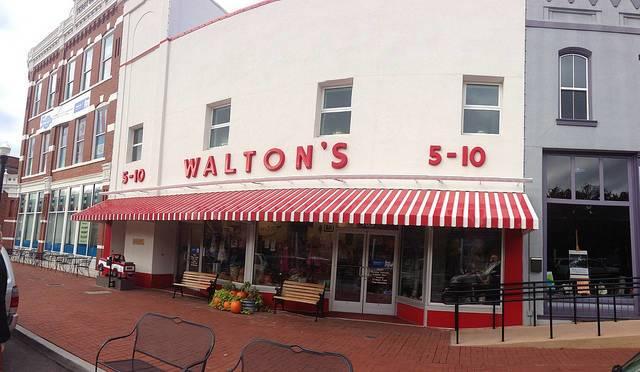
There is no disputing the leading role Walmart has had in making the global retail sector far more responsible, efficient and sustainable. The company’s transformation dates back to Hurricane Katrina, when many of its employees stepped up with disaster recovery assistance during the storm; then-CEO Lee Scott soon convinced the company to start several initiatives to mitigate the company’s environmental footprint, including sustainable supply chain and renewable energy projects.
The company still attracts its share of critics who criticize its impact on everything from urban planning to low wages. Nevertheless, Walmart is a leading case study on how a company can become more sustainable without sacrificing profits.
But when it comes to its new headquarters, Walmart is following the lead of other companies such as Apple and Amazon – and not necessarily in a positive way.
True, Walmart’s employees need a new place to call home in Bentonville, Arkansas. The company’s “Home Office” dates back to 1971, when Walmart was far from visible in Kmart’s rearview mirror and many people in the country still had never heard of the low-priced retailer. Now Kmart is an afterthought and Walmart has become one of the world’s most recognizable companies. But dim spaces, a maze of offices that make little sense and parking that can be quite the hike for Walmart’s employees and visitors “do not reflect Walmart’s position as the world’s largest retailer,” as one Walmart vendor explained to me in a recent email.
The company had long been rumored to be revamping HQ as it gobbled up land around J and Eight Streets – warehouses, single-family homes and even a former day care center count amongst the real estate acquisitions.
Walmart CEO Doug McMillon confirmed those whispers with last week’s announcement that a new headquarters will arise in Bentonville about two miles away from the company’s current hub. McMillon has promised fitness centers, better meal services, easy access to trails (for those who walk or cycle) and hinted about green building design that would provide “natural light.” As McMillon boasted:
“The combined changes will help us get the most out of our existing team, while helping us attract high-quality talent in the future. I can assure you the project will be true to our roots, supporting a culture of servant leadership, which puts customers and associates first, and maintaining our commitment to fiscal and environmental responsibility.”
There is one thing, missing however: better public transportation options. True, Bentonville has a population of 47,000, but that is double the number of people who lived there in 2000. True, many of its employees live in Fayetteville, as they prefer the lifestyle in that nearby college town, a 20- to 30-minute commute from Bentonville.
But that does not mean Walmart could not try. A company long admired for leaving the competition in the dust from having a far more efficient trucking system than its competitors could leverage its influence and work with local communities to improve transportation options. Such a life would not only benefit Walmart’s employees, but for its partners that have offices in the region as well as for all who live in the community. A company such as Walmart that has long embraced technology also can consider options such as Chariot, the commuting service that harnesses smartphone technology to develop the most efficient commuting routes in real time.
More forward thinking about its future headquarters would position Walmart as more than just a jobs creator: it would show that the company is truly anticipating the needs of its employees, while proving to local leaders that it is taking ownership for the traffic and land development that accompanies such growth. Furthermore, the evolution of “smart cities” will change the nature of how retailers interact with its clients. Experimenting with 21st-century transportation technologies could provide Walmart new ideas that would give it yet another leg up on the competition.
Image credit: Brad Holt/Flickr

Leon Kaye has written for 3p since 2010 and become executive editor in 2018. His previous work includes writing for the Guardian as well as other online and print publications. In addition, he's worked in sales executive roles within technology and financial research companies, as well as for a public relations firm, for which he consulted with one of the globe’s leading sustainability initiatives. Currently living in Central California, he’s traveled to 70-plus countries and has lived and worked in South Korea, the United Arab Emirates and Uruguay.
Leon’s an alum of Fresno State, the University of Maryland, Baltimore County and the University of Southern California's Marshall Business School. He enjoys traveling abroad as well as exploring California’s Central Coast and the Sierra Nevadas.














